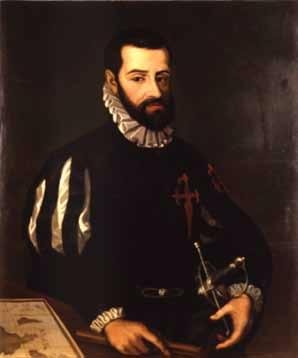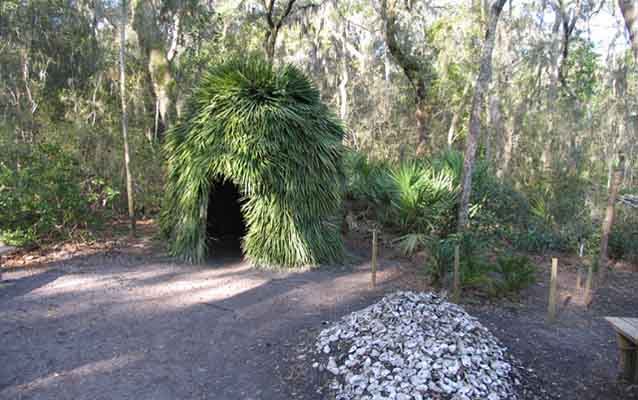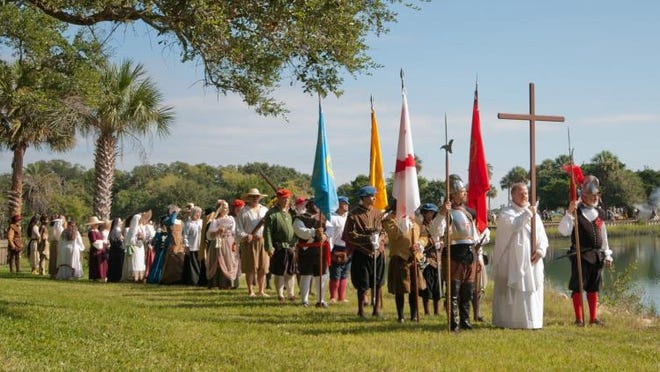Last week, we sailed with Ponce de León to Ponte Vedra Beach where, in 1513, he and his ships’ crews waded ashore as the first Europeans to walk onto the peninsula of Florida. If you decide to drive up to Ponte Vedra, you’ll want to stay the night in St. Augustine. It’s only a 10-mile drive back down the A1A Scenic and Historic Coastal Byway.
More:Fort Myers resident and former news correspondent Gary Shepard’s life reads like a Hollywood script
When you cross the Tolomato River on the Usina Bridge just north of where the Tolomato and the Matanzas Rivers converge at the St. Augustine Inlet, glance over to your left at about 11:00, and you’ll see the spires of the city of St. Augustine, population 17,000 and growing.
You are looking at the site of the first permanent European settlement in what would someday be the United States of America. Its founder, Pedro Menéndez de Avilés, named the settlement San Agustín, after the saint whose feast day falls on August 28, 1565, the day Menéndez first sighted the shoreline of La Florida.
More:New history of Fort Myers a richly imagined look at the City of Palms’ past
If you could peer through time as you drive across this bridge, you would see the five great Spanish ships that on September 8, 456 years ago, came in through the inlet to your left, bringing to shore the eight hundred settlers who would establish Spain’s new colony of La Florida — just there, where the city sprawls along and inland from the Matanzas River.
Admiral Menéndez wisely situated his people safely on the sandy end of a peninsula between two rivers (the Tolomato and the San Sebastion) with a river between them and the great barrier island (Anastasia Island) that would protect them from the sea. After disembarking, the settlers first would have built lean-tos and set up cook fires, but being frightened of the wilderness and needing the sheltering and life-sustaining friendship of the natives, they moved into and set up housekeeping in Timucuan Chief Seloy’s town.
“Timucuan,” of course, is the currently used version of the name given to the indigenous tribe of 35 chiefdoms that occupied north Florida and southeast Georgia when the European immigrants arrived. Historians estimate that the Timucuan numbered some 200,000 at the time, but over the next 200 years, Eurasian diseases, for which they had no immunity, along with warfare with the English colonists and their native allies, and enslavement by the same, brought about their extinction as a tribe. Some of the Timucuan people, however, did escape to Cuba on Spanish ships in 1763, when Spain evacuated the last of her people from Florida.
There is poetic justice in the fact that the few surviving Timucuan should find shelter and safe harbor with the Spanish. Had they not accepted the first Spanish colonists into their ancestral homeland, keeping them alive, at first, with gifts of small game and fish, sharing with them the bounty of their agriculture — the peculiarly “American” crops of corn, beans, squash, and pumpkins—until they could survive on their own?
The Timucuan, whom the Spanish described as tall and handsome and heavily tattooed, live today only in our translation of their name which we have grandly given to the Timucuan Ecological and Historic Preserve, which encompasses 46,000 acres of diverse biological systems within the massive city limits of Jacksonville, Florida, just 30 miles north of St. Augustine.
The 456th St. Augustine Founder’s Day celebration will take place this year on September 4, with a reenactment of the historical event at the Mission Nombre de Dios, 27 Ocean Ave., and the Fountain of Youth Archaeological Park, 11 Magnolia Ave. in St. Augustine. You may visit Floridahistoriccoast.com/events/the-first-thanksgiving for a full description and schedule of activities for this event, or call 732-309-2332.
Cynthia Williams (cwilliams1020@gmail.com)






































